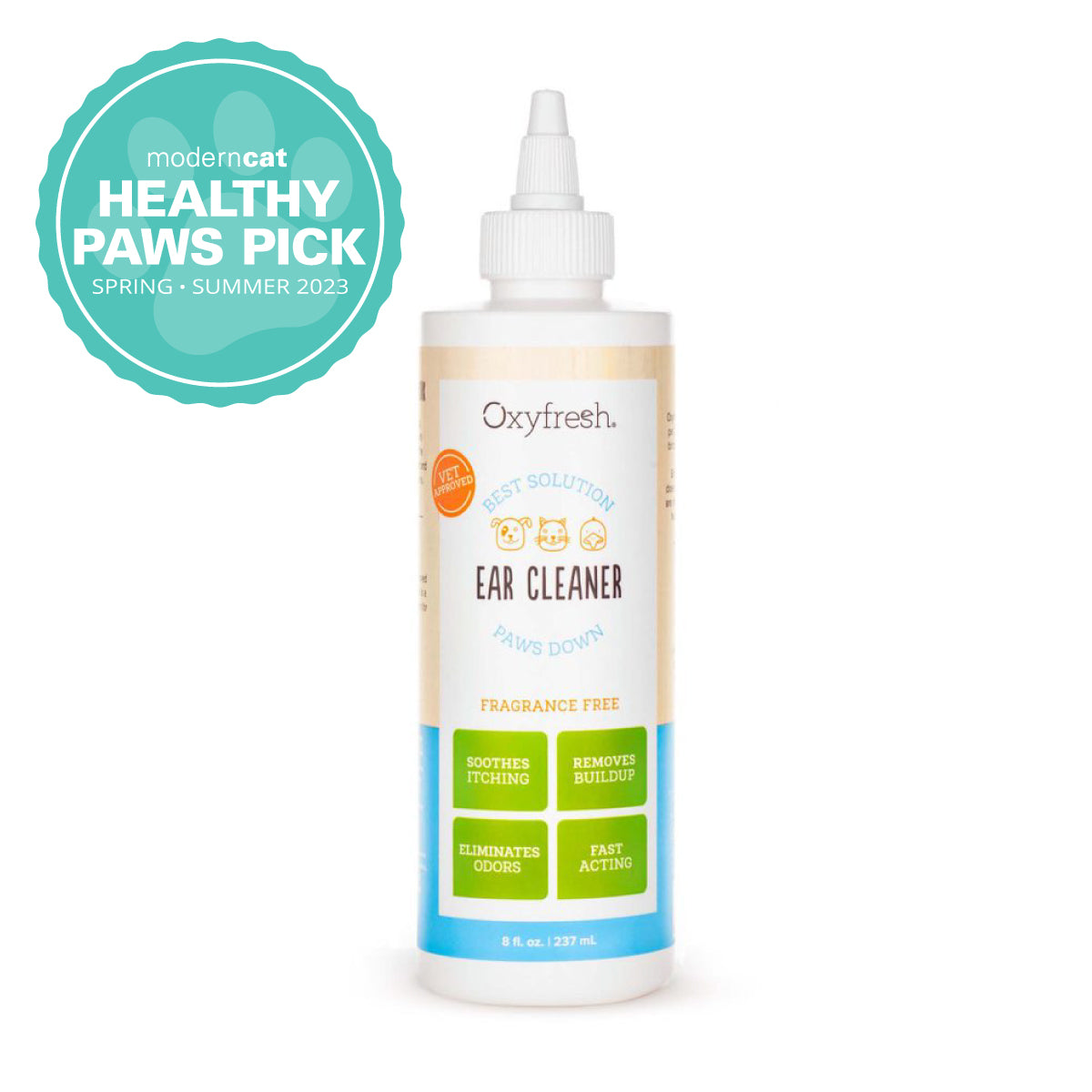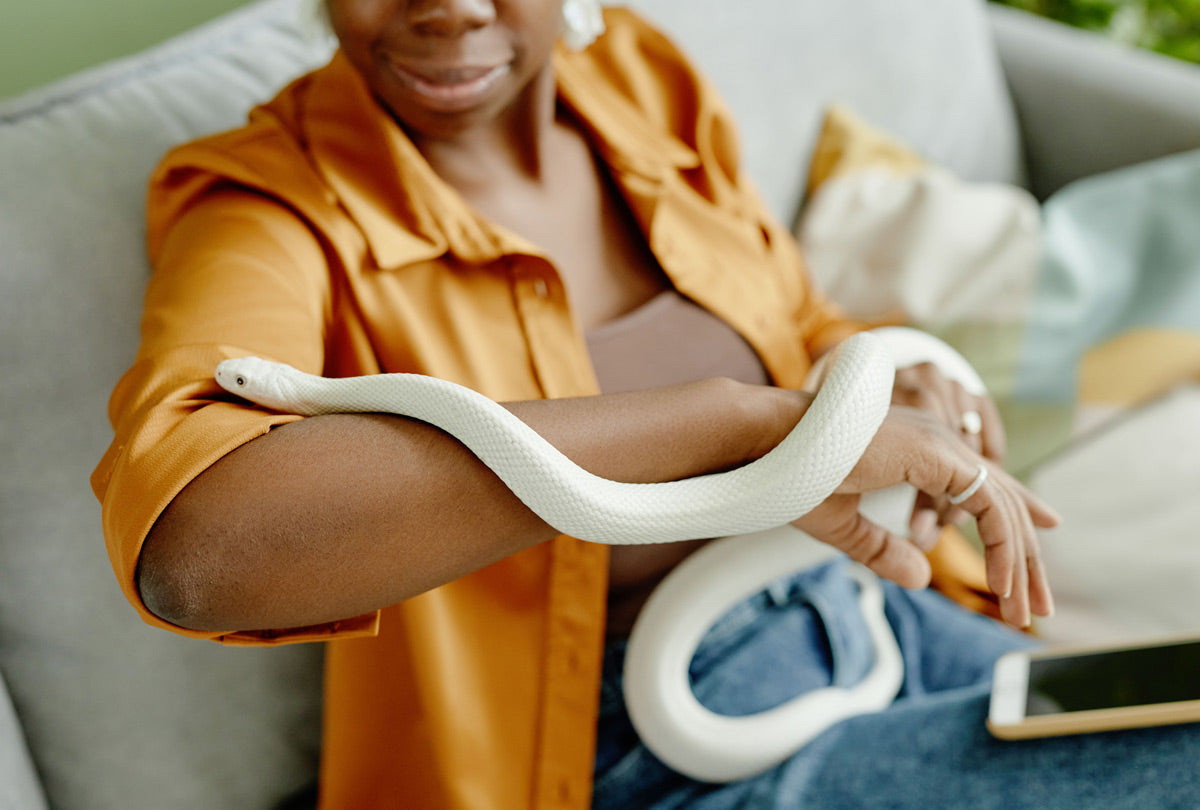Snow shmo. For dogs who can’t live without their daily walks, a little snow isn’t going to keep us homebound. But a blanket of snow means buckets of ice melt. (After all, no one wants to have an epic sidewalk fail or see grandma take a spill on the front steps.)
But before reaching for any bag of driveway salt, make sure it’s a pet-friendly ice melt. The best place to start? This quick guide to choosing a pet-safe ice melt.
What to Know About Chloride Ice Melts
The chemicals in many ice melts can be harmful to our furry friends, especially those with rock salt (sodium chloride). Paws down, ice melts with sodium chloride are the least pet-friendly options. (They’re not friendly to sidewalks or driveways either, causing cracks and erosion.) These jagged, hurt-to-walk-on ice melts are hard to avoid, as sodium chloride ice melts are the de-icer of choice for roads and highways since they’re cheap and effective at melting ice on asphalt, quickly.
Other salt-based products include potassium chloride, magnesium chloride, and calcium chloride ice melts. Many brands will have a combination of these chlorides. While all these salts can cause gastrointestinal upset if consumed by pets, and sore paws from overexposure, magnesium chloride is considered the safest/least toxic of the bunch. It’s also less corrosive to concrete than sodium chloride ice melts. Highly rated magnesium chloride ice melts include Kind Melt and Green Gobbler Pet-Safe Ice Melt.
Why Driveway Salt Can Be Dangerous for Dogs
The biggest concern is if your dog ingests ice-melt salt. This can happen through direct consumption, or more commonly, if your dog licks their paws after a walk. Just like humans, many dogs like the taste of salt, so ALWAYS keep your driveway salt out of reach and watch your dog closely on walks.
If your dog has only eaten a small amount of salty ice melt, a mild upset stomach (vomiting and/or diarrhea) and some drooling is likely the worst that will happen and they will recover on their own. However, if your dog has ingested a lot of driveway salt (4 g. per kg. of body weight can be fatal), you’ll want to contact the vet and watch for symptoms of salt toxicity, which include:
- Increased thirst or urination
- Muscle tremors or seizures
- Mouth ulcerations
- Weakness or balance issues
- Loss of consciousness
Red, cracked & swollen dog paws, oh my!
Rock salt can irritate your pup’s paw pads, causing a dog blister on paw, red paws, or swollen dog paws. Repeatedly stepping on those sharp, jagged rock salt crystals can also lead to dryness, cracking or even chemical burns to your dog’s paws.
If there's a paw problem, you may notice your dog limping, stepping gingerly, licking their paws incessantly, or not wanting their paws handled.
If their paws are in rough shape, it could lead to a skin infection. Treat their paws with a balm, and if the situation doesn’t improve or your dog has lacerations or bleeding, have them checked out at the vet.
Steer Clear of Ethylene Glycol Ice Melts
If you’ve ever seen a plane’s wings de-iced in the winter, that’s ethylene glycol. It’s a beast at ice melting, but unfortunately, it has a sweet taste that dogs like. While ethylene glycol ice melt sprays are easier on a dog’s paws versus chloride ice melts, they can be more dangerous when ingested, as they have the same active ingredient as antifreeze. You’ll want to be diligent in making sure your dog isn’t ingesting any kind of ice melt.
Urea Ice Melts & Proprietary Formulas Are Pet-Friendlier Choices
Urea, an ingredient found in fertilizer, is a de-icer that’s considered safer for pets (and your concrete). Keep in mind, though, its melting power is not as strong when temperatures drop below 21 degrees Fahrenheit. Also, be sure to not over-apply urea ice melt. It can damage your plants, and in urban settings, water runoff can lead to an abundance of nitrogen from urea in waterways, causing algae blooms in lakes, rivers and streams. So don’t take a more-is-better approach when using urea ice melt. And, keep in mind, toxicity can still occur if your pet eats enough of it, so keep it out of paw’s reach.
Other pet-safe ice melt brands have developed their own ice melt systems that are safer choices for pets, the planet and people.
Best Pet-Safe Ice Melts Without Calcium Chloride, Sodium Chloride or Other Salts
Safe Paw

Modified carbonyl diamide crystals, special glycols, and non-ionic surfactant accelerants yield greenish-blue crystals that leave no trace after melting, work in sub-zero temps, are plant-safe, non-corrosive to concrete, and best of all, pet-safe!
Tail-wagging review: We live in the PNW and it gets very frosty and icy up here. We have dogs and cats in and out of the house walking on this stuff, it's safe for their paws and it doesn't track into the house. – Carolina M.
Morton Safe-T-Pet Ice Melt

Developed with the help of veterinarians, Morton Safe-T-Pet is a urea blend, containing no salts or chlorides. The result? Less irritation to pets’ paws than plain salt, keeping pets safer during the winter months.
Tail-wagging review: This is the only ice melt that doesn't hurt our Chihuahua’s feet. – Troy H.
All About Pets Snow & Ice Melt

No rock salts, no sore paws! This ice melt consists of soft round pellets that are easy on the paws and provide two times the coverage of rock salt.
Tail-wagging review: Honestly, we would've been happy if it did half as well as traditional snow melt just to keep our pets safe, but it turns out to work as good, if not better, all while giving us peace of mind for our pets and children too. – Joshua W.
Paws Off! Protecting Your Pooch from Harmful Ice Melt
You can’t change others; you can only change yourself. How many times have you heard this sage advice when a loved one suggests you work on your personal growth? (Pfft.) Well, as annoying as it is, it’s true when it comes to driveway salt.
You can’t be the know-it-all neighbor who dictates what kind of ice melt everyone uses on their sidewalks. (Seriously, you don’t want to end up on a neighborhood app.) So it’s best to know how to protect your pooch from non-pet-friendly ice melts. And keep in mind, even pet-safe ice melts can cause irritation, especially with overexposure.
Get your dog snow boots
Yes, you ARE cool enough to be the pet parent who puts booties on their dog. This will help shield their sensitive paws from all the de-icing products found on the streets and sidewalks. Booties will also help protect them from the chilly temperatures. Snow and ice can burn dogs’ paw pads and the delicate skin between their toes, spoiling the fun of their walks. Many veterinarians recommend that for winter-weather-loving dogs, 20 degrees Fahrenheit is when it becomes too cold for walks.
How to warm your dog up to the idea of snow boots:
- Set your dog’s new snow boots on the floor for them to sniff and admire. Offer treats and encouragement to set the mood.
- Put your dog in a sit, show him a boot and then ask for his paw (or take his paw if he doesn’t know that trick). When you have paw in hand, give a treat.
- Put the snow boot on your dog and then release him. If your dog is a Swiftie, he may try to shake it off, shake it off. Just try not to laugh at your dog, tempting as it may be. You don’t want to upset your pup.
- Once your dog is accustomed to one boot, add another and so on until all four are on. Let your dog walk around the house, getting used to different surfaces (carpet, tile, etc.).
- Now you’re ready to venture outdoors. Start slowly to get your pooch used to walking in his stylish new snow boots.
Use a dog paw cleaner
If you still have nightmares about the 1980s moon boots your mom made you wear, and would never subject your pup to the same, no judgment. Just make sure to wipe their paws after a walk using a dog paw cleaner (paw wipe).
Look for dog paw cleaners without alcohol that are plant-based and moisturizing to pamper their paws. Using a dog paw cleaner will not only help keep salt off their paws (and then out of their mouths), but it will keep the driveway salt from being tracked all over the house. As pet parents, we’ve cleaned up enough messes. If you’re on a budget, you can rinse their paws off with lukewarm water instead, then towel dry their paws.
Use paw balm to help prevent swollen, red paws on dog
Before you head out on a snowy walk, apply paw balm to your dog’s paws. It will act as a barrier and help protect them from rock salt and other chemicals in ice melts. You’ll want to re-apply the balm post-walk too, as it will help moisturize their paws and help soothe cracks and irritation. There are many dog paw balms online, or if you’re an overachiever, you can make your own paw balm.
Watch your step
Steer clear of areas that likely have a lot of salt, such as the sludgy side of the road. Don’t let your dog eat the sludgy snow or lick the melted puddles either.
Decrease time spent outdoors
To minimize your dog’s exposure to ice melts and cold conditions, you can shorten their walks and explore ways to have fun with your dog indoors.
Pamper your pet with a bath
Giving your pooch a bath will help keep their fur all-clear of ice-melt chemicals, icky sidewalk sludge, and any other gross stuff they encounter in their outdoor adventures.
The Final Word
From dog snow boots to dog paw cleaner and oh-so-pampering baths, there are many ways to protect your pooch during the cold winter months. And while you may find that pet-safe ice melts are more expensive than rock salt varieties, they can save you in the long run by avoiding a trip to the vet and repairing your concrete driveway. Besides, just look at your furry goofball’s face ... they’re SO worth it.






